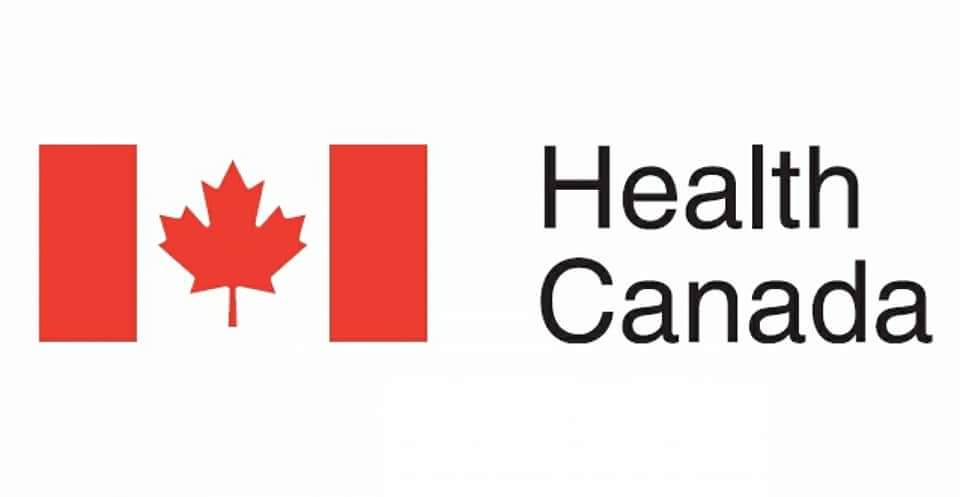Canada has confirmed its first two cases of monkeypox in Quebec. Health Canada is working to track and verify the disease
What is Monkeypox?
**** Info via Environment Canada
Infectious Substances – Monkeypox virus
CHARACTERISTICS: Virus belongs to family Poxviridae, sub-family Chordopoxvirinae and genus Orthopoxvirus
MPXV is a 200 to 250 nm brick- shaped enveloped virus with characteristic surface tubules and a dumbbell-shaped core component.
The MPXV genome consists of linear double-stranded DNA. Monkeypox virus is antigenically related to the variola and vaccinia viruses.
SECTION II – HAZARD IDENTIFICATION
PATHOGENICITY/TOXICITY: The disease is characterised by the onset of non- specific symptoms which can include fever, headache, backache, and fatigue during a prodromal period of 2 to 3 days.
This is followed by a 2 to 4 week period in which a rash develops and progresses from macules, to papules, to vesicles, and then to pustules, followed by umbilication, scabbing and desquamation.
The rash is usually confined to the trunk but can spread to the palms and soles of the feet, occurring in a centrifugal distribution. Lesions can also develop on mucous membranes, in the mouth, on the tongue, and on the genitalia.
The pathogenicity of monkeypox is similar to that of smallpox except for the pronounced lymphadenopathy associated with monkeypox and generally milder symptoms.
Lymphadenopathy is thus considered a key distinguishing feature of monkeypox.
The case fatality rate is approximately 1 to 10% in Africa, with higher death rates among young children. In children unvaccinated against smallpox, the case-fatality rate ranges from 1% to 14%.
EPIDEMIOLOGY: Monkeypox affects all age groups; however, children under age of 16 have constituted the greatest proportion of cases. The virus occurs naturally in Western and Central Africa in the vicinity of tropical jungles. MPXV isolates originating from West Africa appear to be less virulent and/or transmissible to humans and non-human primates than those from the Congo Basin. Furthermore, the cessation of smallpox vaccination appears to have increased the susceptibility of humans to severe monkeypox.
In 1970, the first human case of monkeypox was identified in a 9 month old child in the Democratic Republic of the Congo (formerly Zaire) in a region where smallpox had been eradicated in 1968.
Over the next year, six further cases human of monkeypox infection were reported in Liberia, Sierra Leone and Nigeria. From 1970 to 1979, 47 human cases of monkeypox were identified, 38 of which were from Zaire, and the majority were in close proximity to the tropical rainforest.
A total of 79 cases were subsequently reported of over the next 12 years, and a further 88 cases between 1996 and 1997, and 51 cases between 2001 and 2002 in the Democratic Republic of Congo.
In 2003, the first cases of human monkey pox in the western hemisphere were reported after an outbreak was reported in Midwestern United States (Illinois, Indiana, Kansas, Missouri, Ohio and Wisconsin) due to the importation of MPXV-infected West African rodents from Ghana.
HOST RANGE: Humans, squirrels, non-human primates, black-tailed prairie dogs, African brush-tailed porcupines, rats, pigs, shrews, and rabbits.
INFECTIOUS DOSE: Unknown.
MODE OF TRANSMISSION: Transferred from infected animals through a bite or through direct contact with the infected animal’s blood, body fluids, or lesions.
It can be transmitted via abrasions in the mouth to persons eating infected squirrels or monkeys. It can also be transferred from human-to-human via the respiratory tract, by direct contact with body fluids of an infected person, or with virus-contaminated objects. The rate of person-to person transmission is increasing, with a secondary attack rate of approximately 10%.
INCUBATION PERIOD: Approximately 7 to 17 days
COMMUNICABILITY: MPXV is capable of person-to-person transmission; however, the longest documented chain of infection consisted of only 4 generations of person-to- person transmission, indicating that MPXV has limited potential for epidemic spread.
SECTION III – DISSEMINATION
RESERVOIR: Not fully understood but arboreal squirrels (Funisciurus spp., and to a lesser degree, Heliosciurus spp.) are believed to be a reservoir for MPXV
SECTION IV – STABILITY AND VIABILITY
DRUG SUSCEPTIBILITY: Cidofovir is considered as a potential therapeutic agent for MPXV infections, as it has been shown to have activity against many DNA viruses in vitro , including MPXV.
SUSCEPTIBILITY TO DISINFECTANTS: Orthopoxviruses are susceptible to 0.5% sodium hypochlorite, chloroxylenol-based household disinfectants, glutaraldehyde, formaldehyde, and paraformaldehyde.
PHYSICAL INACTIVATION: Orthopoxviruses are inactivated by heat (autoclaving and incineration)
SURVIVAL OUTSIDE HOST: Orthopoxviruses are stable at ambient temperatures when dried
SECTION V – FIRST AID / MEDICAL
SURVEILLANCE: Monitor for symptoms (unexplained fever, rash or prominent lymphadenopathy) and confirm by laboratory diagnosis using virus isolation, PCR-based assays, haemagglutination inhibition assays, electron microscopy, ELISA, Western blotting, or immunohistochemistry.
Note: All diagnostic methods are not necessarily available in all countries.
FIRST AID/TREATMENT: There are no licensed antiviral drugs available to treat MPXV infection; instead, treatment is supportive
IMMUNIZATION: Vaccination with vaccinia virus (smallpox vaccine) protects against monkeypox with greater than 85% efficacy.
PROPHYLAXIS: Vaccination with the smallpox vaccine, within 4 days and up to 14 days after initial contact with a confirmed monkeypox case.
LABORATORY-ACQUIRED INFECTIONS: None reported to date.
SOURCES/SPECIMENS: Lesion fluids or crusts, respiratory secretions, and tissues of infected hosts.
PRIMARY HAZARDS: Ingestion, parenteral inoculation, droplet or aerosol exposure of mucous membranes or broken skin, or contact with infectious fluids or tissues.
SPECIAL HAZARDS: Bite of infected non-human primates or rodents, or objects contaminated with the virus (e.g. bedding, clothing)
CONTAINMENT REQUIREMENTS: Containment Level 3 facilities, equipment, and operational practices for work involving infectious or potentially infectious materials, animals, or cultures.
PROTECTIVE CLOTHING: Personnel entering the laboratory should remove street clothing and jewellery, and change into dedicated laboratory clothing and shoes, or don full coverage protective clothing (i.e., completely covering all street clothing). Additional protection may be worn over laboratory clothing when infectious materials are directly handled, such as solid-front gowns with tight fitting wrists, gloves, and respiratory protection. Eye protection must be used where there is a known or potential risk of exposure to splashes.
OTHER PRECAUTIONS: All activities with infectious material should be conducted in a biological safety cabinet (BSC) or other appropriate primary containment device in combination with personal protective equipment. Centrifugation of infected materials must be carried out in closed containers placed in sealed safety cups, or in rotors that are loaded or unloaded in a biological safety cabinet. The use of needles, syringes, and other sharp objects should be strictly limited. Open wounds, cuts, scratches, and grazes should be covered with waterproof dressings. Additional precautions should be considered with work involving animals or large scale activities.
SECTION VIII – HANDLING AND STORAGE
SPILLS: Allow aerosols to settle and, wearing protective clothing, gently cover spill with paper towels and apply suitable disinfectant, starting at the perimeter and working towards the centre. Allow sufficient contact time before clean up (30 min)
DISPOSAL: Decontaminate all materials for disposal by steam sterilization, chemical disinfection, and/or incineration.
STORAGE: In sealed containers that are appropriately labelled and locked in a Containment Level 3 facility.
PREPARED BY: Pathogen Regulation Directorate, Public Health Agency of Canada.




